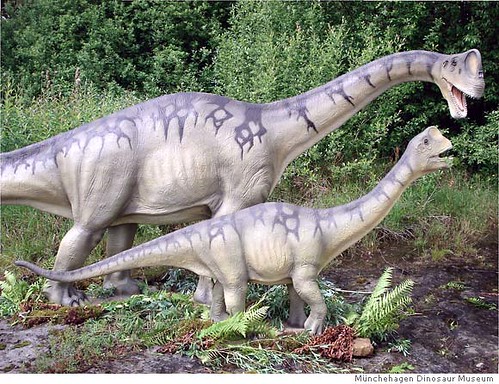
Mother and child, deep in conversation.
Models of newly described miniature sauropod, Europasaurus holgeri, adult with juvenile
(Europasaurus; "reptile from Europe", after "Europe" and the Greek, sauros for "lizard";
holgeri after Holger Ludtke, who discovered the first bones).
Image courtesy of Freilichtmuseum Munchehagen (Munchehagen Dinosaur Museum).
At first, it was not especially remarkable when self-taught paleontologist, Holger Luedtke, found some small sauropod bones in a German quarry in 1998. However, scientists realized quite recently that the group of at least 10 diminutive sauropods were not babies from an already-known sauropod species as they first assumed; no, instead these were fully-grown adults from a new species -- miniature giants, in fact.
This discovery was made quite by accident. Martin Sander, a researcher from the University of Bonn and lead author of the paper, was always looking for more bones from young dinosaurs to bolster his research efforts, so he was pleased when he was offered a few small sauropod bones by his colleagues.
Sauropods are herbivores with long necks and small heads, and they typically have long tails. This taxonomic group includes the most widely recognizable lineages of giant dinosaurs; Apatosaurus (formerly; Brontosaurus), Brachiosaurus and Diplodocus -- creatures that could tower above the ground by as much as 18 meters (60 feet) and could weigh over 100 tons.
"It's a close relative to brachiosaurus," said Sander. "That's that big thing with the high neck that's kind of like a dinosaurean giraffe. And those things are quite big."
Based on our current knowledge of sauropods, it was easy to mistake these small sauropods for babies: the specimens ranged in length between 1.7 to 6.2 meters (5.5-20 feet), just as one would expect for youngsters of these species. But when Sander and his colleagues studied the bones more carefully, they realized that the largest of these fossils came from adult animals, not babies.
The scientists determined this after closely examining histological sections from bones from several differently-sized specimens. By studying the growth marks and the hollow spaces within the fossil bone matrix, the scientists were able to identify the growth series for this species from juvenile and sub-adult to adult animals. And they determined that the adults were actually dwarf sauropods.
Figure a. (juvenile) below. As their histological data show, bone cortex from the juvenile animal (figure "a") reveals no growth marks at all. Growth marks in bone are similar to tree growth rings, increasing in number and growing closer together as the individual ages. Young animals show wide spaces between each growth ring because their bodies are growing so rapidly. Bones from juveniles also show few hollow spaces within the bone structure; increasing numbers of empty spaces within bone matrix, known as "lacunae" (meaning "gap"), are indicative of increasing age. Black arrow indicates source of histological sample. [Note: click each image for another version in its own window].
Figure b. (sub-adult) below. Unlike the juvenile, the histological sample from the sub-adult animal does show a few growth marks (white arrows), as well as an increasing number of lacunae (figure "b").
Figure c. (adult) below. The adult bone contrasts with the other two specimens because it has closely-spaced growth rings (white arrows) and an obviously increased number of lacunae within the bone matrix (figure "c"). This histological sample was taken from the largest animal found, and all of these changes are consistent with an adult animal.
Europasaurus is estimated to have lived approximately 154 million years ago, near what is now the German town of Goslar. When this dinosaur was alive, this region was characterized by islands less than 200,000 square kilometers in area -- too small to support large animals, such as sauropods. So, this species shrank in size, such that it ended up being slightly larger than a horse, similar to what is seen for the dwarf rhinoceros that lives on the South Pacific island of Sumatra. (okay, there's better examples, but they have not hit the news recently).
"The ancestor of the Europasaurus would have dwarfed rapidly on immigrating to the island, or as a response to shrinking land masses caused by rising sea levels," the authors note in their Nature paper.
"It's what's known as an island dwarf," added Sander. "And what's happening is if you introduce some species to an island, either it goes extinct or it adapts to the decreased resources and then it decreases in body size."
The species has been given the formal name; Europasaurus holgeri, or "Holger's reptile from Europe", in honor of its discoverer, Holger Luedtke.
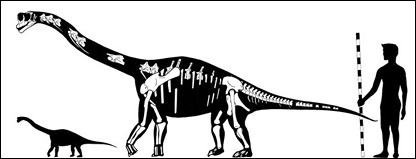
An adult and juvenile with a human for scale.
White bones indicate known parts of the skeleton. (Image: O.Mateus,
Museu da Lourinha, modified from original paper).
.
Comment: I noticed one peculiar thing in the paper's acknowledgments. The authors wrote this curious comment; P.M.S. was responsible for the bone histology work presented as part of this study. The morphology, systematics and taphonomy of the new sauropod was studied by the remaining authors, who are to be considered the sole authors of the name Europasaurus holgeri gen. etsp. nov. Now, why do you suppose they wrote that since PMS is the lead author of the paper? As lead author, doesn't he "approve" everything in it? [Note: I originally speculated that there was a fight between the lead author and his co-authors regarding the name of this animal, which I later edited out because, hey, I am still seeking a job and would prefer not to shoot myself in the head with idle speculation. However, it looks as though I was close to the truth, so now I am re-editing to add that speculation again].
Sources:
Original paper by P. Martin Sander, Octávio Mateus, Thomas Laven and Nils Knötschke (Nature 441, 739-741 (8 June 2006)). [histology images and other data, and some quotes]
Tiny dino discovered (Nature online) [dino figure]
BBC news [quotes]
Museu Lourinha (Portugeuse) [dino figure, modified from figure in the original paper]
Freilichtmuseum Munchehagen (Munchehagen Dinosaur Museum) [featured Europasaurus image at top]
.

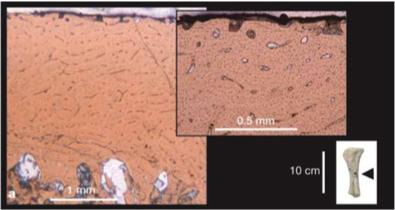
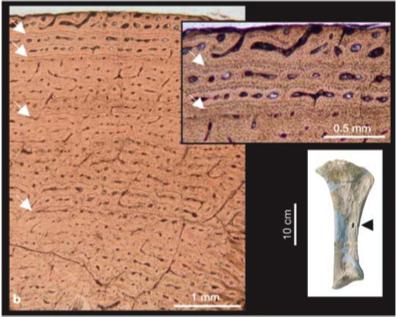
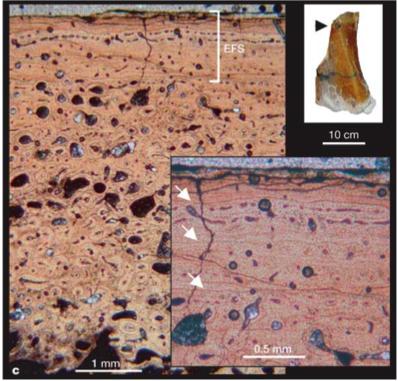
Aw, it's cute! I want some mini sauropods.
I think it makes sense for the other authors to be the authors of the species, but if PMS just did the histology, I'm not sure why he's the lead author. Peculiar.
(Irrelevantly, the Discovery Channel ads make me giggle. Do they really think most science geeks watch their "documentaries" to do anything other than point and laugh?)
Okay, having looked at the Nature abstract it makes sense. The paper's about histology and dwarfism, so PMS is the lead author, but tangentially to that, the dinosaur got named by the taxonomy people.
If they think people will pay much attention to the note, though, I suspect they're mistaken.
Based on the emails I've been getting from the Dinosaur Mailing list paleontologists are all over it. Concensus seems to be what you mentioned in your first comment...
This is a very cool find.
I'm not sure whether the Sumatran rhinoceros is a good example of an island dwarf, since it also is found on the Southeast Asian mainland. I was thinking more along the lines of the pygmy elephants of the Mediterranean, pygmy mammoths of the Channel Islands and pygmy stegodonts of Southeast Asian islands in the Pleistocene.
Good article - it makes me want to go back to the articles written about homo floresiensis in Indonesia. From what I recall most of the analysis concerned the one(?) intact skull and the tools associated with it. I can't remember if there was a bone analysis comparable to that presented here (i.e. floresiensis bones vs. erectus bones).